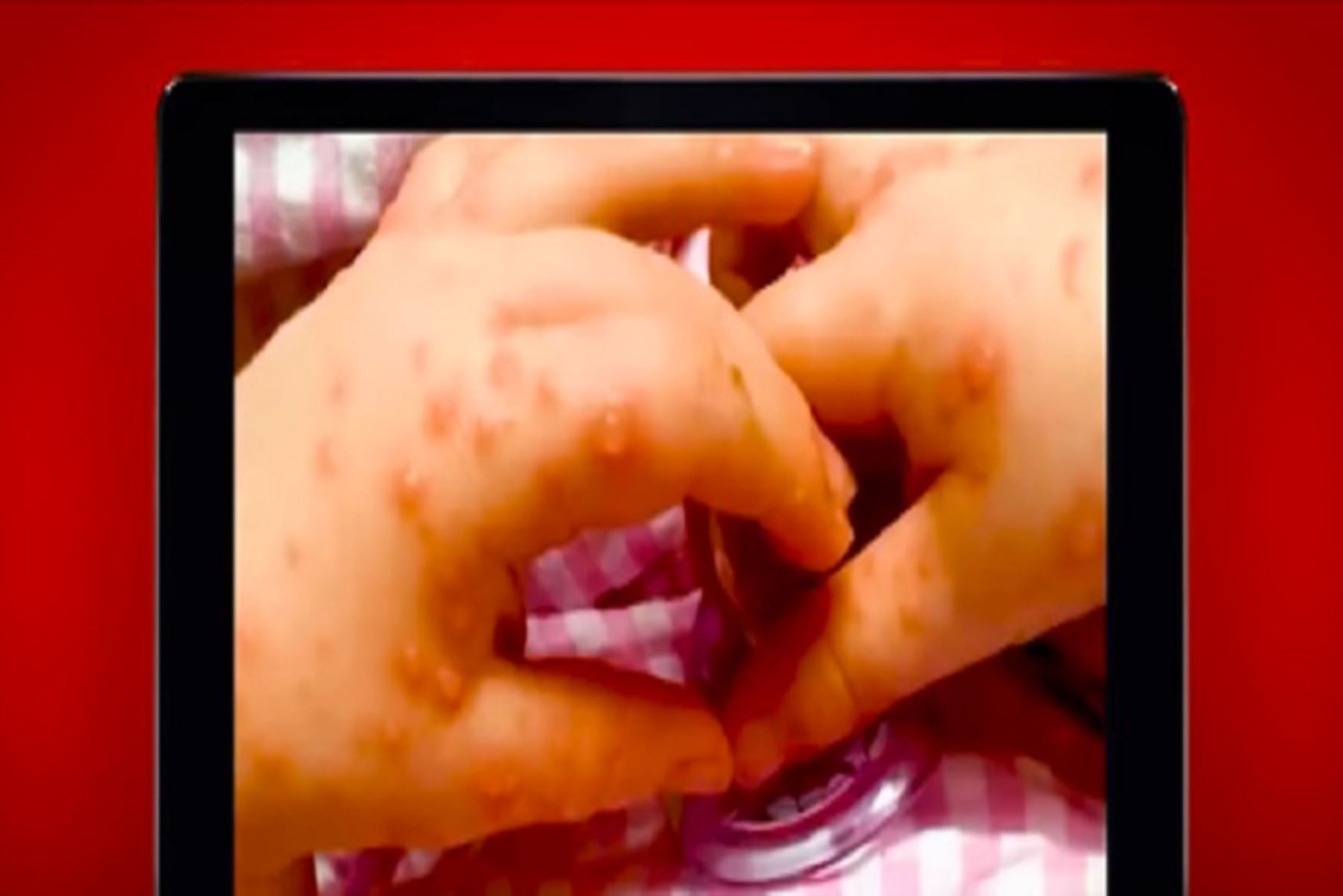
In the midst of the COVID-19 pandemic, health authorities have announced in recent days an outbreak of the coxsackie virus that has already accumulated more than 50 cases, according to the report provided by the Chief of Epidemiology of the Regional Health Directorate (Diresa) Ucayali, Mayra Saavedra. Also known as hand, foot and mouth syndrome, it would have occurred in early childhood educational institutions in Pucallpa just days after the start of the school year in Peru.
A first record indicated that there were four cases in the Victoria Barcia Boniffatti, Santa Rosa, Casita del Saber and Elvira García García schools. These schools reported the presence of children with the symptomatology of the disease, which are: general malaise, high fever of 2 to 5 days, sore throat and the most marked are sore-like blisters in the mouth (tongue, gums), palms and soles of the feet.
“... It is human-to-human transmission through contaminated hands and respiratory tract, so it is rapidly disseminated,” Saavedra told RPP about the recent cases that have raised the alert in the country. The specialist recommended that parents of families not self-medicate their children, because it is viral, it does not need the use of antibiotics, but there is symptomatic treatment since high fever can cause seizures and complications that last between 7 to 10 days, such as encephalitis and myocarditis, have been detected.
ABOUT CARE
La Diresa urges families and schools to increase hygiene measures at home such as hand washing, keeping nails short. Increase fluid consumption and control the temperature of the child. It is important to check the parts of the body for any abnormal presence on the skin, and if so, go to the nearest medical center for appropriate and professional help from the medical staff.

HELP FROM MEDICAL PERSONNEL
Following the first information about the coxsackie virus, telephone lines 061-787927, 061-787933, 061-788053 and 951 642 156 have been enabled for personnel from the Comprehensive Intervention Team to visit the applicant's home, from 07:30 to 18:30 hours, in order to corroborate the symptoms and confirm that it is the case disease. “Today we had more than 54 calls in eight hours and most of the children visited would have the disease,” said the epidemiologist.
MORE INFO ABOUT COXSACKIE
According to a scientific article by the UPCH, this virus belongs to the Picornaviridae family, of the genus enteroviruses, so called because they multiply in the intestine after they have been ingested with contaminated water or food. The name of coxsackie is due to the name of the city in the state of New York, where they were first isolated in 1948 during a polio epidemic.
Experts mention that the spread of viruses occurs from one person to another, commonly through contact with dirty hands or surfaces contaminated with feces. In tropical areas, infections occur throughout the year, but in colder climates outbreaks of the virus occur more often in summer and autumn.
These data highlight that the majority of those infected at some point in their lives - being more prevalent in infants, children and adolescents - are associated with the lack of good hygiene conditions. Symptoms appear 2 to 10 days after exposure to the virus, continuing with manifestations similar to that of a cold or influenza, but with intestinal symptoms.
KEEP READING
Últimas Noticias
Debanhi Escobar: they secured the motel where she was found lifeless in a cistern
Members of the Specialized Prosecutor's Office in Nuevo León secured the Nueva Castilla Motel as part of the investigations into the case

The oldest person in the world died at the age of 119
Kane Tanaka lived in Japan. She was born six months earlier than George Orwell, the same year that the Wright brothers first flew, and Marie Curie became the first woman to win a Nobel Prize

Macabre find in CDMX: they left a body bagged and tied in a taxi
The body was left in the back seats of the car. It was covered with black bags and tied with industrial tape
The eagles of America will face Manchester City in a duel of legends. Here are the details
The top Mexican football champion will play a match with Pep Guardiola's squad in the Lone Star Cup

Why is it good to bring dogs out to know the world when they are puppies
A so-called protection against the spread of diseases threatens the integral development of dogs




